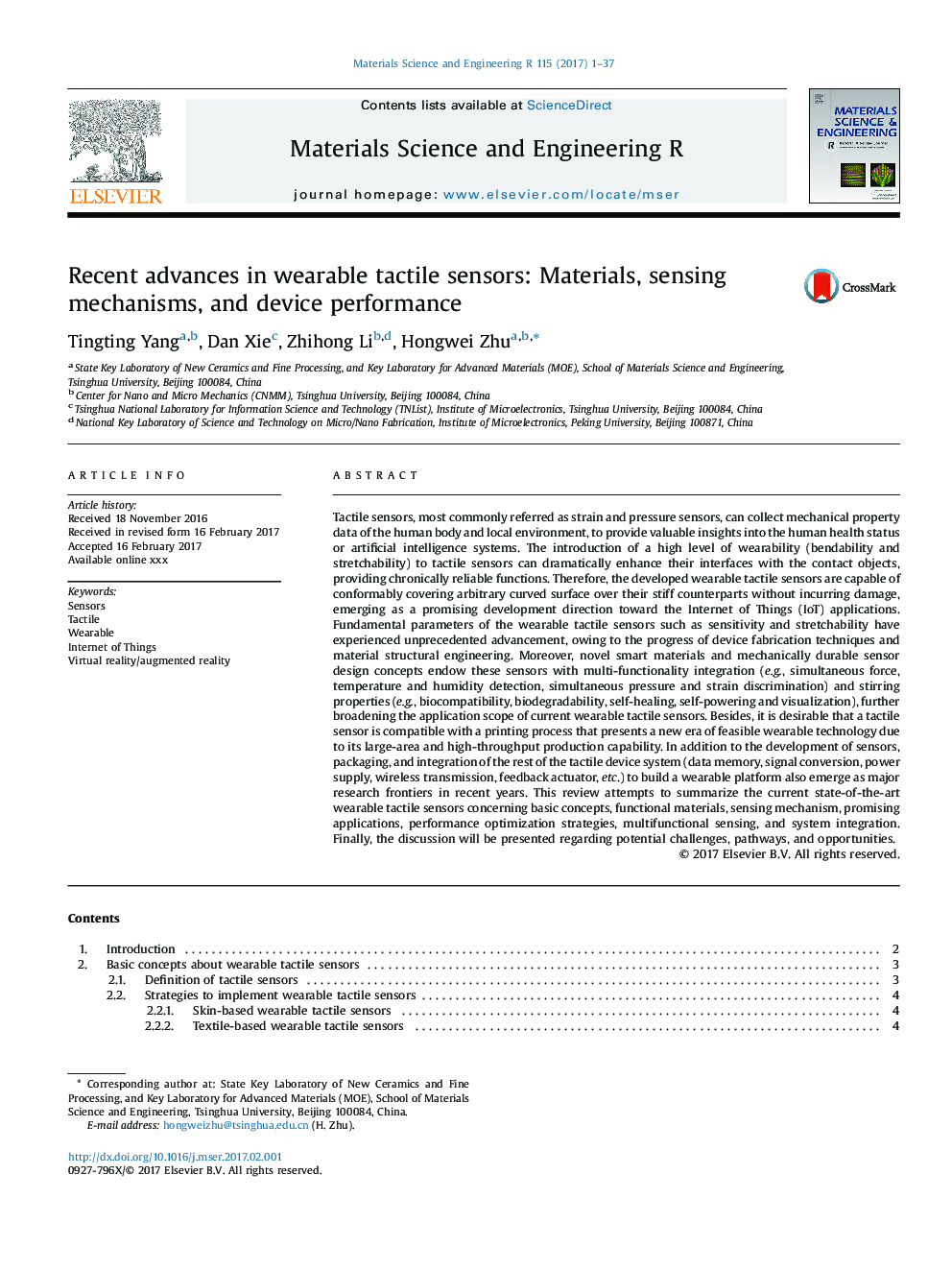| Article ID | Journal | Published Year | Pages | File Type |
|---|---|---|---|---|
| 5448887 | Materials Science and Engineering: R: Reports | 2017 | 37 Pages |
Abstract
Tactile sensors, most commonly referred as strain and pressure sensors, can collect mechanical property data of the human body and local environment, to provide valuable insights into the human health status or artificial intelligence systems. The introduction of a high level of wearability (bendability and stretchability) to tactile sensors can dramatically enhance their interfaces with the contact objects, providing chronically reliable functions. Therefore, the developed wearable tactile sensors are capable of conformably covering arbitrary curved surface over their stiff counterparts without incurring damage, emerging as a promising development direction toward the Internet of Things (IoT) applications. Fundamental parameters of the wearable tactile sensors such as sensitivity and stretchability have experienced unprecedented advancement, owing to the progress of device fabrication techniques and material structural engineering. Moreover, novel smart materials and mechanically durable sensor design concepts endow these sensors with multi-functionality integration (e.g., simultaneous force, temperature and humidity detection, simultaneous pressure and strain discrimination) and stirring properties (e.g., biocompatibility, biodegradability, self-healing, self-powering and visualization), further broadening the application scope of current wearable tactile sensors. Besides, it is desirable that a tactile sensor is compatible with a printing process that presents a new era of feasible wearable technology due to its large-area and high-throughput production capability. In addition to the development of sensors, packaging, and integration of the rest of the tactile device system (data memory, signal conversion, power supply, wireless transmission, feedback actuator, etc.) to build a wearable platform also emerge as major research frontiers in recent years. This review attempts to summarize the current state-of-the-art wearable tactile sensors concerning basic concepts, functional materials, sensing mechanism, promising applications, performance optimization strategies, multifunctional sensing, and system integration. Finally, the discussion will be presented regarding potential challenges, pathways, and opportunities.
Related Topics
Physical Sciences and Engineering
Materials Science
Electronic, Optical and Magnetic Materials
Authors
Tingting Yang, Dan Xie, Zhihong Li, Hongwei Zhu,
